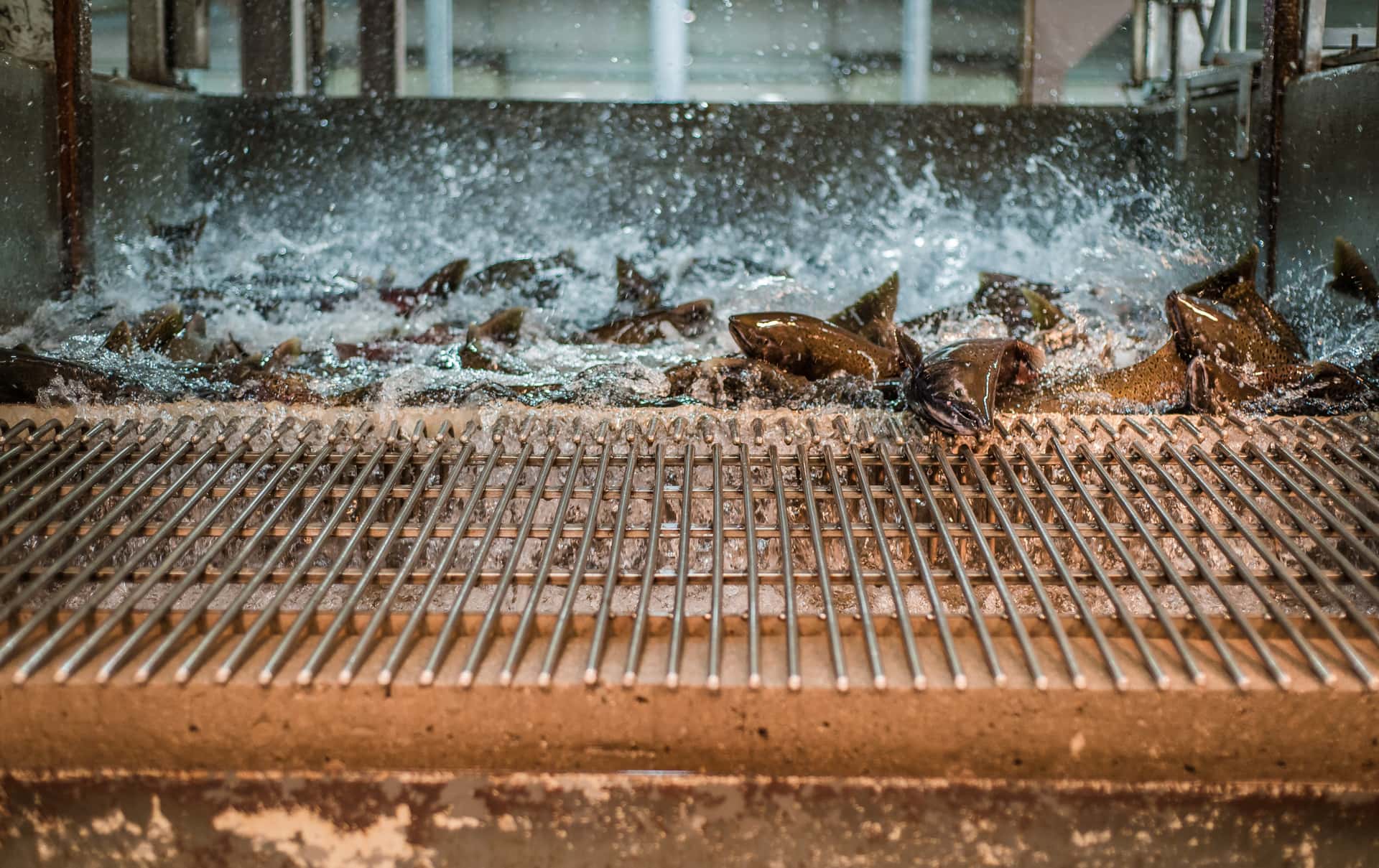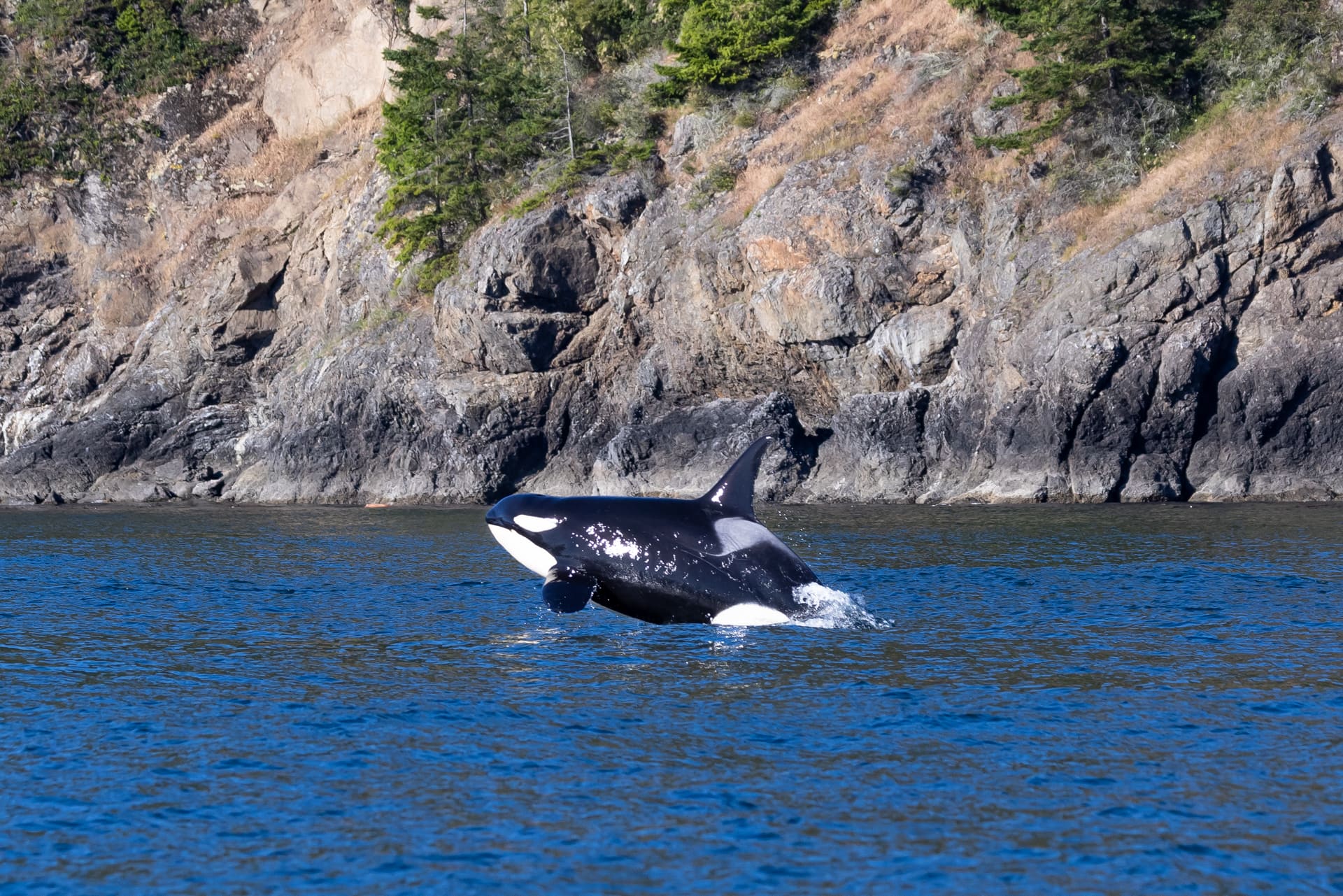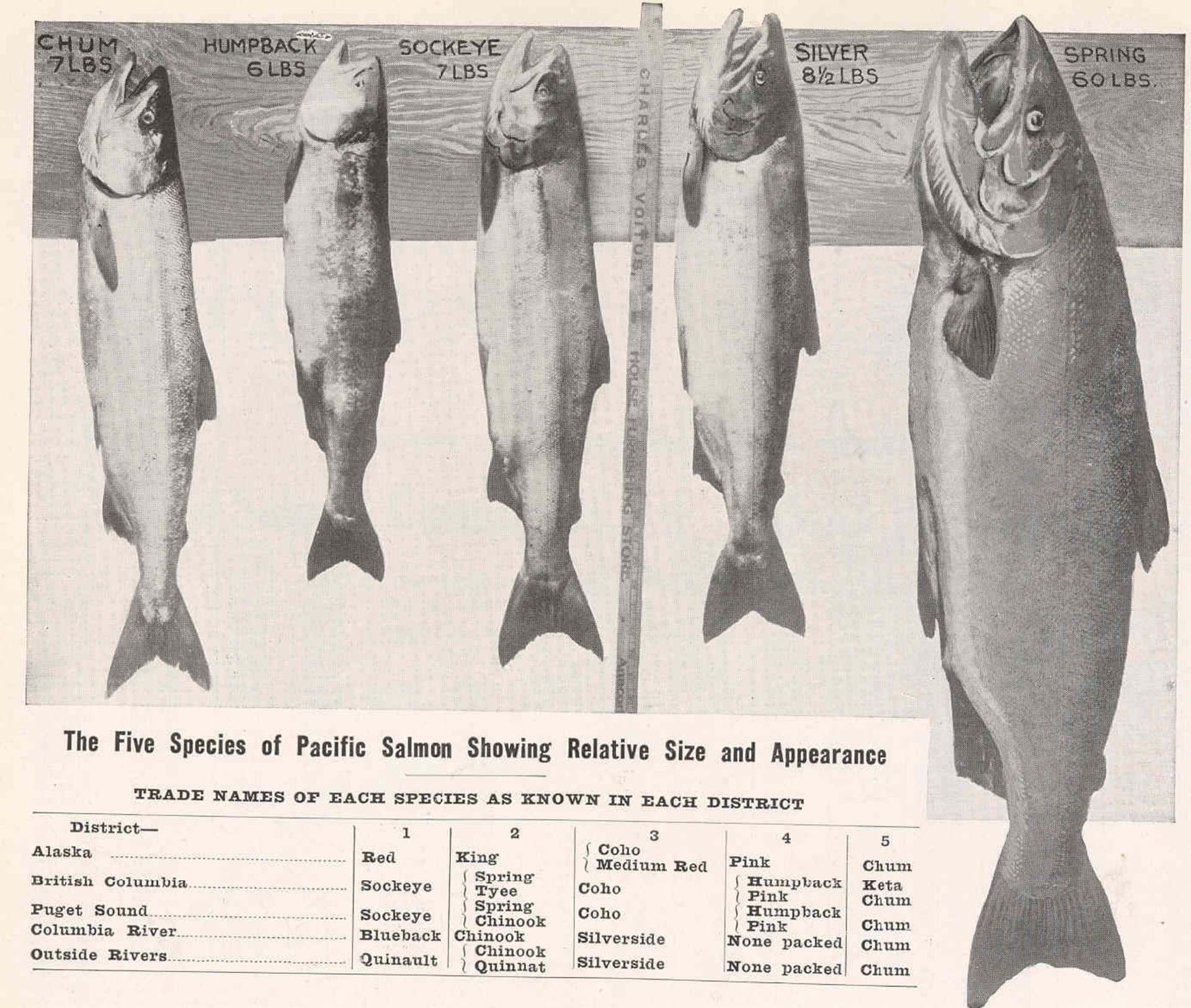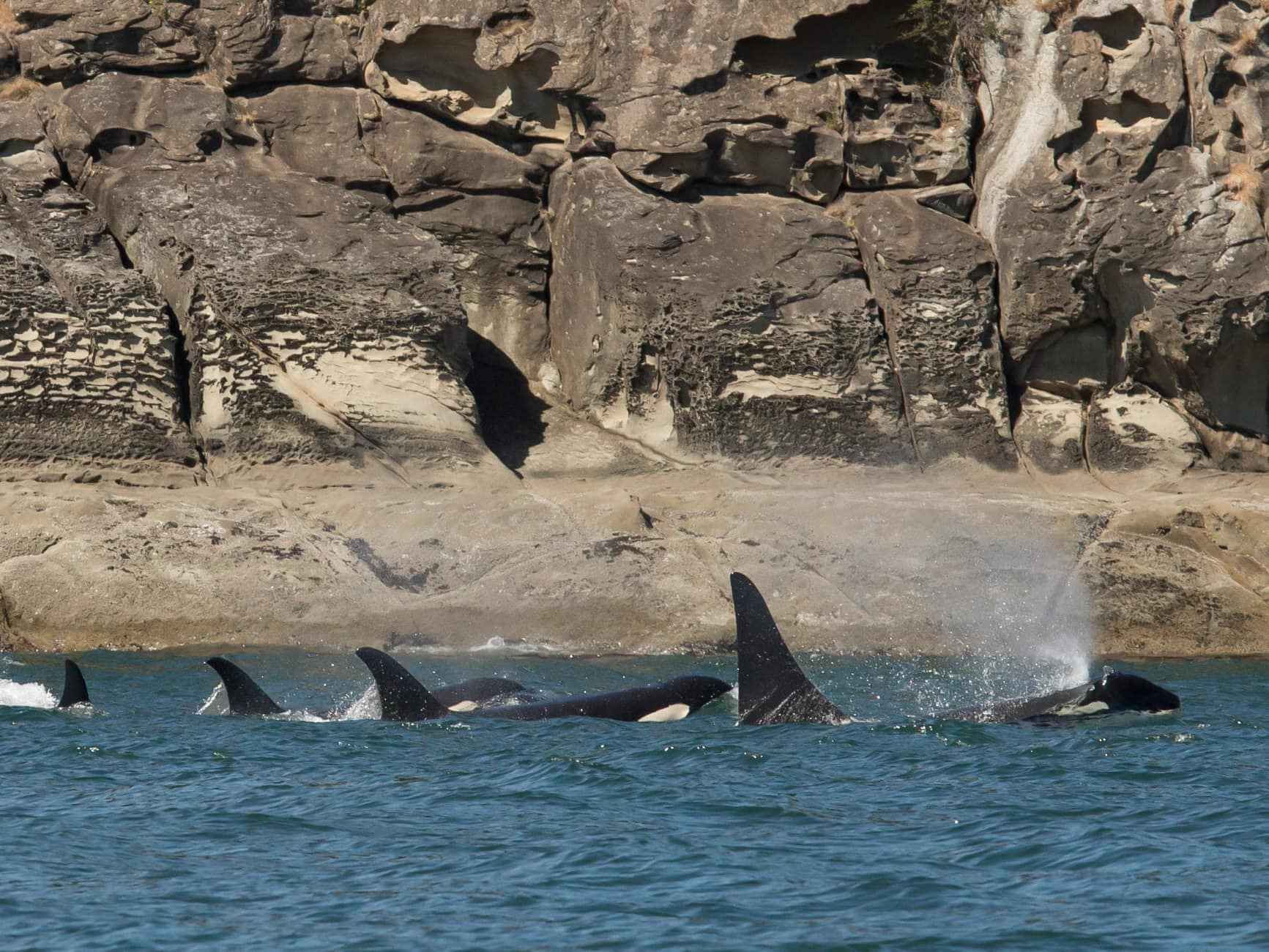
In 2018 scientists uncovered a previously unobserved pattern in the deaths of Southern Resident killer whales. Since 1998, more have died in even years than odd. In their hunt for a likely suspect, only one seemed a good fit: Pink salmon. Why? In the Salish Sea, pink salmon spawn every other year—unlike other salmon species that spawn annually. In fact, a subsequent study found that this biennial event threatens the survival of juvenile hatchery-raised Chinook salmon and, therefore, Chinook-dependent Southern Resident killer whales.
The hatchery effect
Wild Chinook salmon have declined dramatically over the last century due primarily to overfishing and habitat loss. The promise of hatchery production to compensate for these declines has largely failed. These practices do not mimic wild spawning from multiple rivers over many months. Instead, hatchery fish are released in volume, “resulting in many hungry mouths in the same time and place.” Predators have adapted to the predictable timing of this seafood buffet, further impacting hatchery fish survival. Recent research suggests that pink salmon also indirectly impact their survival.
In this study, researchers collected 30 years of data from over 150 Washington State hatcheries that released juvenile Chinook salmon at over 1,200 locations in Puget Sound, Georgia Strait, and Juan de Fuca Strait. Astonishingly their combined releases between 1983 and 2012 totaled over 1.5 billion juveniles.
Released April through June, juvenile Chinook salmon spend a year feeding in the Salish Sea before emigrating to the Pacific Ocean. An estimated 17 million juvenile pink salmon share the same waters every other year. This study assessed the effects of resource competition on the likely survival of these hatchery-raised fish.
What are the threats?
Pink and Chinook salmon do not eat the same prey species in the first year of their lives, so they are not in direct competition. However, as pink salmon are first to arrive in the Salish Sea, they consume vast quantities of copepods—a key plankton species in the marine food web. The abrupt loss of this critical food source disrupts the entire ecosystem, reducing prey species on which Chinook salmon—and other fishes, birds, and mammals—depend.
The researchers noted, “Chinook salmon marine survival is especially related to their feeding in the Salish Sea in June-July, and changes in the prey base have been directly linked to their survival in the coastal ocean.” In other words, they are less likely to reach maturity if they can’t bulk up before heading to the Pacific.
In addition, the sheer volume of pink salmon flooding the Salish Sea creates another threat: attracting the attention of predators who will also catch juvenile Chinook salmon. Scientists refer to this as “apparent competition.”

Hatchery chinook salmon play a major role in NOAA’s killer whale recovery plan.
How did researchers assess survival rates?
They gathered all available data, including the regions of release sites, the number of hatchery releases per region, and the presence or absence of juvenile pink salmon in the Salish Sea. They designated even-numbered years “pink”— the year pink salmon feed in the Salish Sea and odd-numbered years as “non-pink.”
From this, they predicted the number of hatchery-released Chinook salmon surviving in the Pacific Ocean to age two, in both pink and non-pink years. They then compared their predictions with actual data on Chinook salmon returns. These were taken from “river surveys, track counts and remote counting methods” to estimate the numbers of hatchery fish on spawning grounds. They estimated those likely caught in commercial and sport fisheries “based on [fish] scales sampled from over 2 million Chinook salmon [caught] between 1985 and 2014.”
What were the findings?
“On average when higher numbers of hatchery Chinook salmon juveniles emigrate with juvenile pink salmon, fewer of them survive their ocean migration and return as adults to Puget Sound. In contrast, this pattern was not consistently observed for non-pink year juvenile Chinook salmon emigrants.”
In other words, Chinook salmon are less likely to survive when released from hatcheries in the same ‘even’ year that juvenile pink salmon are feeding in the Salish Sea. This finding appears to correlate with the mortality pattern identified in the Southern Resident killer whales, with deaths more than three times higher in even years than odd when “successful births were 50% less frequent.”
A pink salmon leaps out of the water in Haro Strait.

What does this mean for the future?
Researchers noted, “Chinook salmon are critical prey for endangered Southern Resident killer whales, and increasing releases of hatchery Chinook salmon has been proposed to aid recovery.”
Of great concern is that this proposal would result in a marked increase in hatchery production—much above those of recent decades. Therefore, it will be crucial for researchers to explore “the ecosystem patterns and mechanisms behind these findings, [so that] hatchery management practices and research can be further informed to benefit Chinook salmon and Southern Resident killer whale conservation.”
Continued below...
In a recent lawsuit, NOAA Fisheries cited the need to increase hatchery production to compensate for the loss of Chinook salmon caught in Southeast Alaska fisheries yet destined for rivers in the Southern Resident killer whales home waters. Hence as the judge wryly noted, NOAA’s hatchery solution is to solve a fishery problem they’ve created. Unfortunately, in the magistrate judge’s report, while recommending the closure of these fisheries, she proposed that hatchery releases continue, despite evidence submitted about their harm.
Yet hatcheries are an utterly inadequate substitution for wild salmon. As the catch records show, despite the release of billions of hatchery-raised fish, Chinook salmon populations have consistently declined, as have the Southern Resident killer whales. It’s astonishingly clear that if we are to save these species from extinction, we will have to work with nature—not against it.





